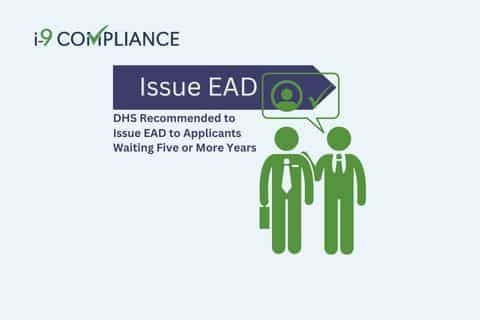DHS Recommended to Issue EAD to Applicants Waiting Five or More Years

November 14, 2023
The White House Commission for Asian American, Native Hawaiian, and Pacific Islander Affairs (AANHPI) approved a recommendation concerning employment authorization documents (EADs) and Advance Parole documents. According to the AANHPI, the lawful permanent resident process may offer the option of issuing documents early.
If approved, it could provide flexibility in work authorization to many thousands currently waiting in backlogs. The current application process for lawful permanent resident residence involves multiple steps. The first is to file an Immigrant Petition for Alien Workers (Form I-140). The petitioner will receive a priority date afterward, allowing them to file an Application to Register Permanent Residence or Adjust Status (Form I-485) once that date becomes “current.”
The employment-based visa category currently offers a maximum of 140,000 visas. Unfortunately, backlogs for those seeking lawful permanent resident status have drastically increased. This backlog includes roughly 1.8 million people, with processing times as high as fifty years. Those waiting for lawful permanent residence may submit an Application for Employment Authorization (Form I-765) and Application for Travel Document (Form I-131) after filing Form I-485. Until then, they must remain in their current status, which can present challenges for workers and employers.
However, the AANHPI recommended that the Department of Homeland Security (DHS) grant EADs and Advance Parole travel authorization to individuals in the EB-1, EB-2, and EB-3 categories. The AANHPI commented that these categories have remained in the processing backlog for five or more years. According to the Commission, these EADs should remain valid until an individual’s application for Lawful Permanent Residence has been finalized.
This recommendation would allow individuals to change employers and travel without the current limitations of employment-based non-immigrant visas. It would also stop forcing workers to return to their home countries for visa renewals or other issues, which can pose challenges for workers and employers. Allowing individuals to remain in the U.S. to renew their visas and address other issues would reduce the burden on U.S. embassies processing visa appointments.
This recommendation now awaits the President’s approval to go into effect. This development will be welcome news for many employers hoping to benefit from extended work authorization for their employees. However, they should avoid growing complacent in the Employment Eligibility Verification (Form I-9) process. The best way to ensure continued compliance is by using an electronic I-9 management system. This system can guide personnel through every step and provide reminders of when to take action.
Ensure compliance today by switching to an electronic I-9 management tool with I-9Compliance.